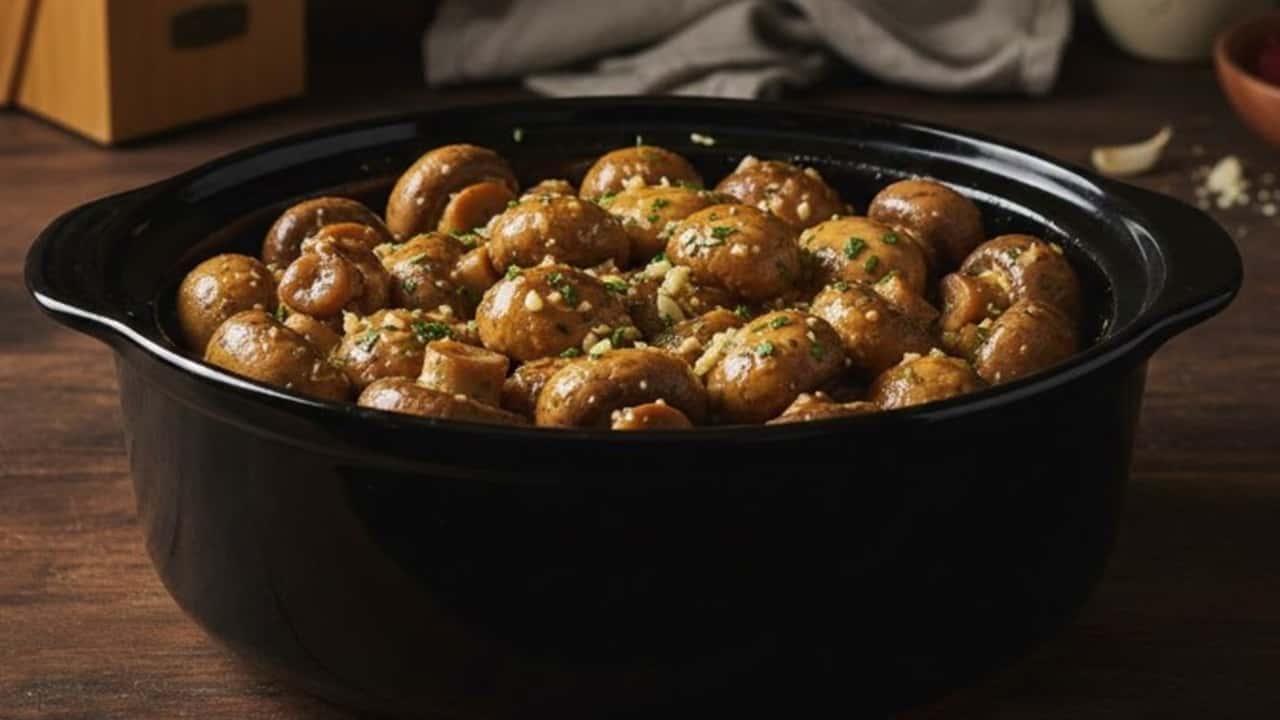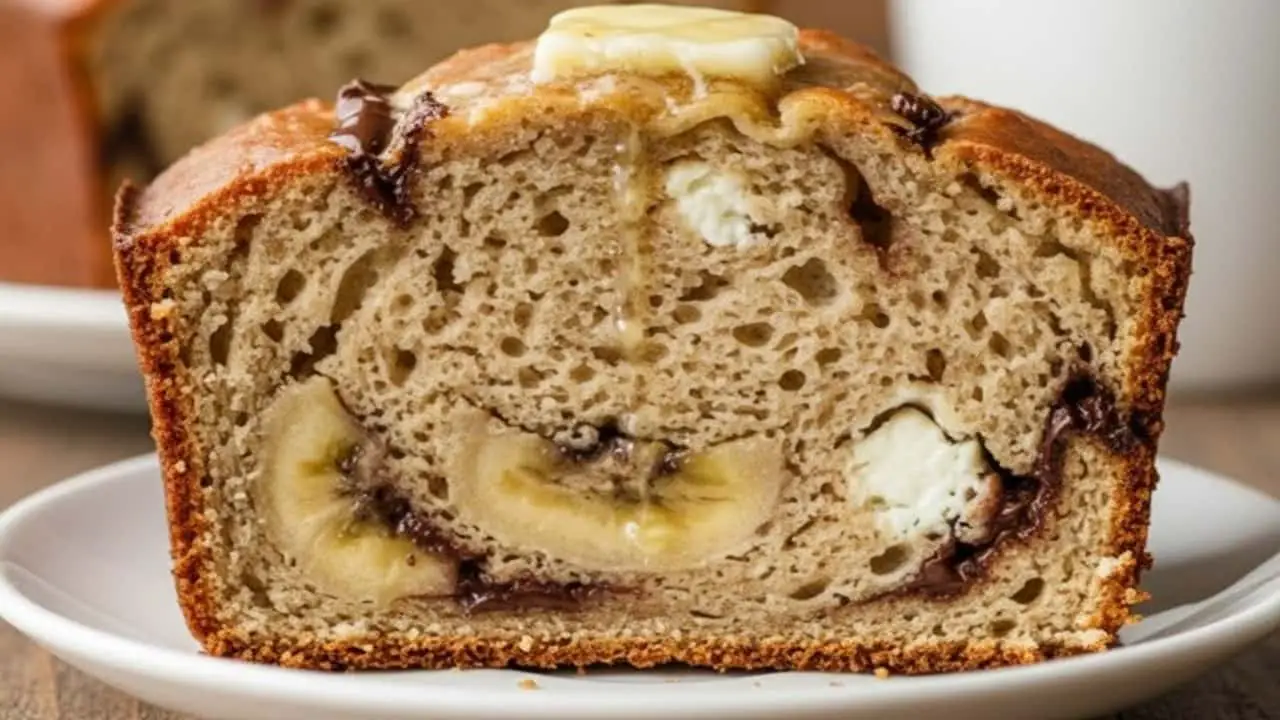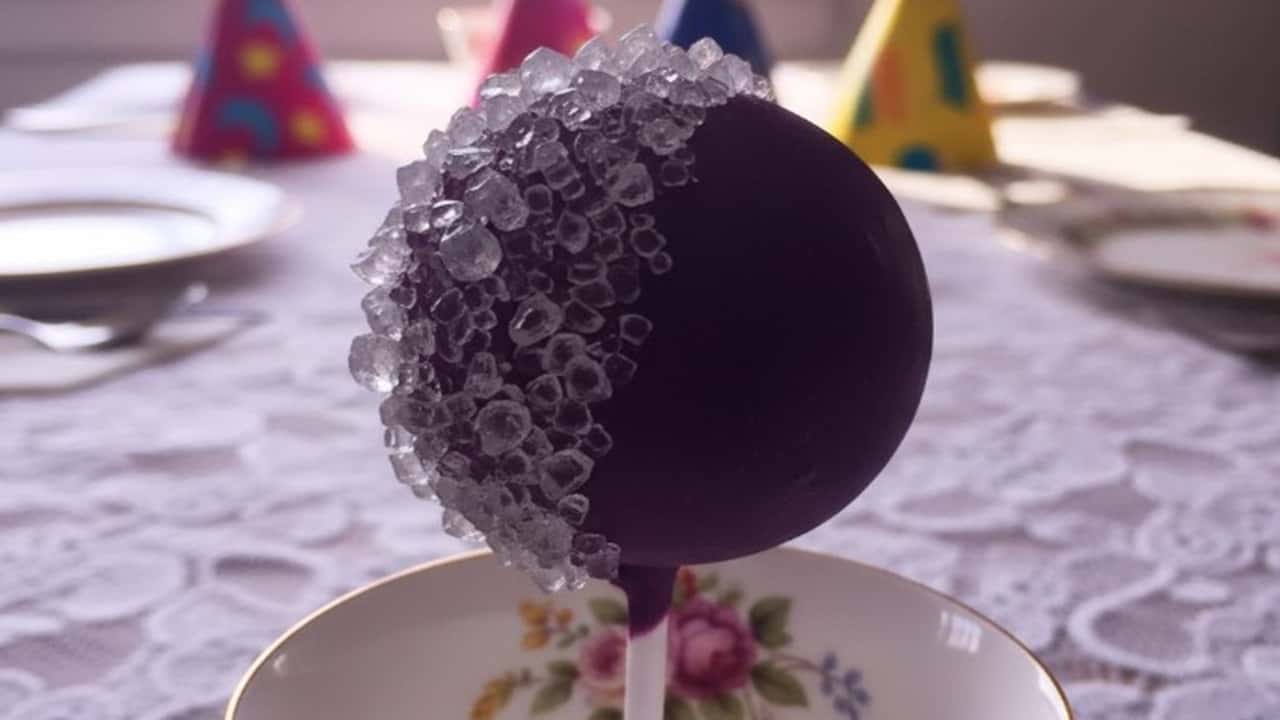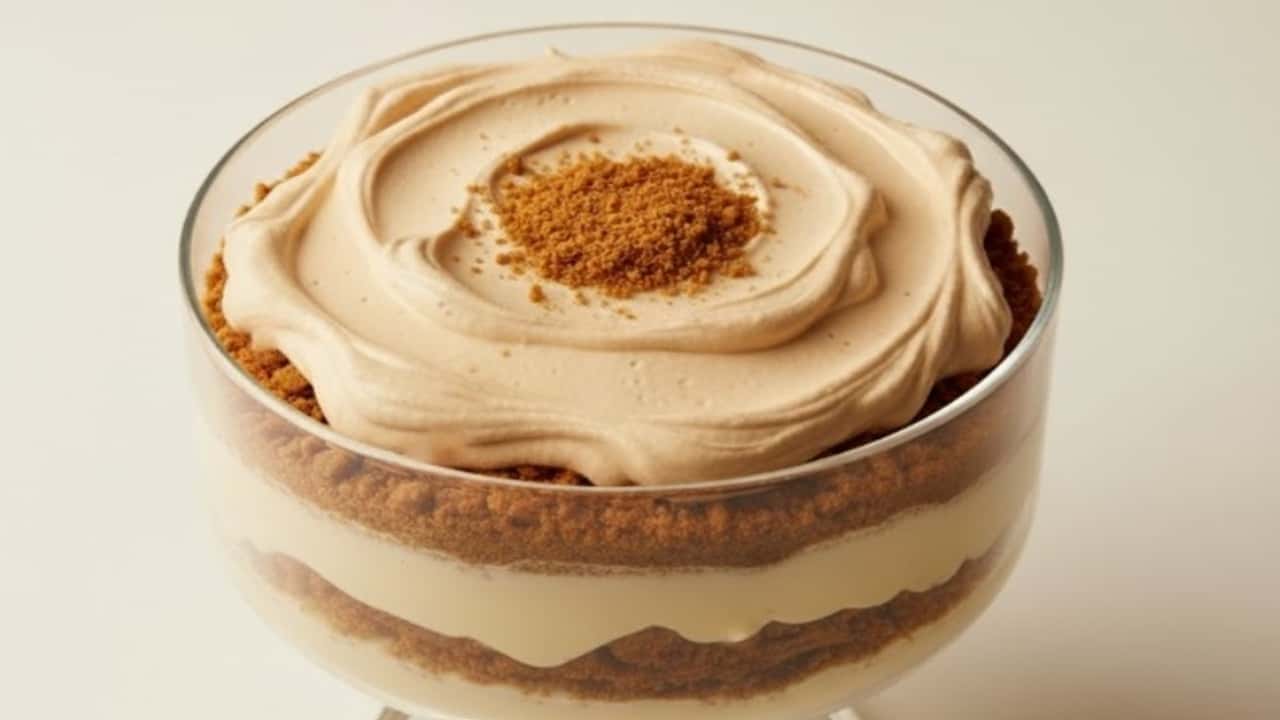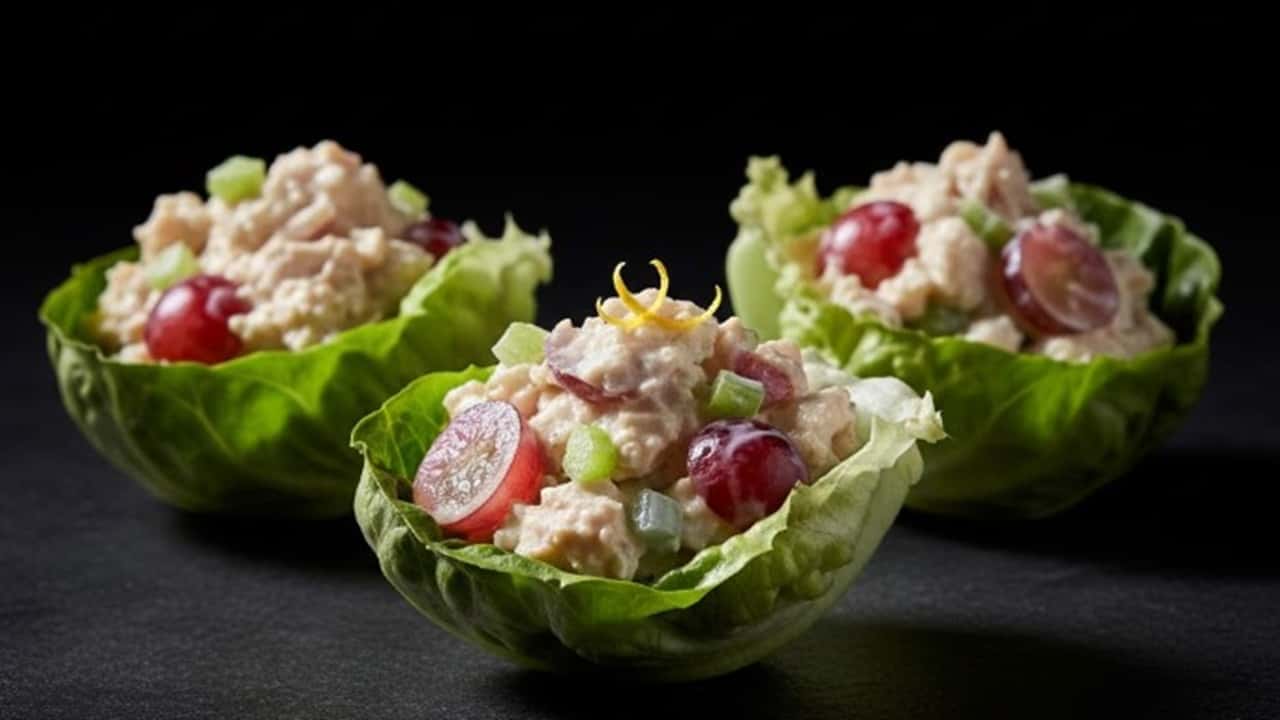Have you ever marveled at the velvety texture and caramelized edges of restaurant-style Japanese eggplant, only to find yourself drowning in oil trying to recreate it at home? After years of experimentation in my test kitchen and countless trips to Japan, I’ve discovered a revolutionary technique that achieves that coveted texture without a drop of oil.
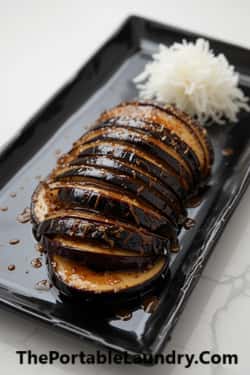
Get ready to transform your eggplant game forever.
Choose Your Crispy Eggplant Recipe Preferences
Make Using JAPANESE Eggplant | Make Using Regular Eggplants
The Problem with Traditional Eggplant Recipes
Most recipes rely heavily on oil to achieve that silky texture we all crave.
But here’s what they don’t tell you: excessive oil actually masks the delicate, natural sweetness of Japanese eggplant.
Through careful study of traditional Japanese cooking techniques and modern culinary science, I’ve developed a method that lets the eggplant’s true character shine.
The Science Behind Perfect Eggplant
Japanese eggplant (or nasu) has a different cellular structure than its globe counterpart.
Understanding this is crucial for our oil-free technique. The flesh contains tiny air pockets that, when properly treated, create a natural steaming effect during cooking.
Essential Equipment
Before we dive in, let’s talk about the tools that will set you up for success:
- A high-quality broiler: I use and recommend the Breville Smart Oven Pro. Its precise temperature control and even heating are game-changers for this technique.
- Traditional Japanese cooking tools:
- A wooden drop-lid (otoshi-buta)
- A natural fiber brush for glazing (tsutsu)
- Basic kitchen essentials:
Affiliate Disclosure: Kitchen tools and ingredients mentioned in this post have been carefully selected based on years of professional experience. Some links above and within the article are affiliate links, meaning I earn a small commission if you make a purchase. Rest assured, I only suggest or recommend kitchen essentials or things I use and trust in my own kitchen.
Ingredients Required To Make Crispy Zero Oil Japanese Eggplant
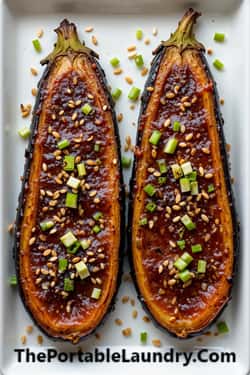
For the Eggplant:
- 4 Japanese eggplants (slender, purple variety)
- 2 tablespoons sea salt (for pre-treatment)
For the Umami Glaze:
- 3 tablespoons premium mirin (avoid “aji-mirin”)
- 2 tablespoons junmai sake
- 2 tablespoons aged soy sauce
- 1 tablespoon brown rice vinegar
- 1 knob ginger, finely grated
- 1 small piece kombu (dried kelp)
For Garnish:
- 2 tablespoons toasted sesame seeds
- 2 scallions, finely sliced
- Shichimi togarashi (optional)
Instructions To Make Crispy No Oil Japanese Eggplant
Step 1: Eggplant Selection and Preparation
Choose firm, glossy eggplants with tight, unblemished skin. The stem should be bright green – this indicates freshness.
Quarter them lengthwise, keeping the stem intact for presentation.
Pro Tip: If your eggplants have visible seeds, they’re overripe. The flesh should be cream-colored and seedless.
Step 2: The Critical Pre-Salting
Here’s where the magic begins. Rather than the standard salting method, we’re using a traditional Japanese technique called shiozuke:
- Create parallel diagonal scores on the flesh, about 1/8 inch deep
- Salt generously, focusing on the scored surfaces
- Stand the pieces vertically in a colander
- Place a weighted otoshi-buta on top
This precise pressure application helps extract moisture while maintaining structural integrity.
Step 3: The Umami Glaze Construction
In a heavy-bottom saucepan, combine mirin and sake.
Bring to a boil to evaporate the alcohol. Add remaining glaze ingredients and simmer until reduced by half.
The kombu will infuse gradually – remove it after 10 minutes to prevent bitterness.
Step 4: Surface Treatment
After salting, pat the eggplant thoroughly dry. The surface should feel slightly leathery – this is perfect. Brush away any visible salt crystals with a dry towel.
Step 5: The Broiling Method
Place the oven rack six inches away from the broiler. Preheat on high for 5 minutes.
Here’s the crucial sequence:
- Place eggplant skin-side down
- Broil 3 minutes
- Brush with glaze
- Broil 2 minutes
- Flip, brush skin with glaze
- Broil 2 minutes
- Flip again, final glaze
- Broil 1-2 minutes until caramelized
The key is watching for the right visual cues: the surface should bubble and blister slightly, with edges turning deep mahogany.
Troubleshooting Guide
- If the eggplant is too dry:
- Salting time was too long
- Broiler temperature too high
- Pieces cut too thinly
- If not caramelizing properly:
- Moisture wasn’t fully extracted
- Glaze too thin
- Broiler not hot enough
Serving Presentation
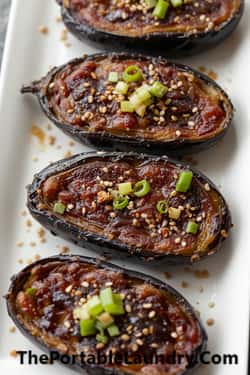
Arrange the eggplant on a traditional rectangular plate (if you have one). Garnish with:
- A generous sprinkle of toasted sesame seeds
- Finely sliced scallions
- A light dusting of shichimi togarashi
- Optional: A small mound of freshly grated daikon
Why This Zero Oil Recipe Works
The combination of proper salting, moisture control, and precise heat application creates a natural caramelization process.
The mirin and sake provide sugars for browning, while the soy sauce adds umami complexity.
Health Benefits Of This Oil Free Recipe
This oil-free method not only reduces calories but also:
- Preserves eggplant’s natural antioxidants
- Maintains dietary fiber integrity
- Allows for better nutrient absorption
- Reduces overall fat content while maximizing flavor
Cultural Context
In traditional Japanese cuisine, eggplant is considered a summer vegetable, prized for its cooling properties.
This cooking method honors that tradition while adapting it for modern health-conscious diners.
Beyond the Basic Recipe
Once you’ve mastered this technique, try these variations:
- Yuzu kosho glaze
- Miso-dengaku style
- Spicy toban-djan version
Final Thoughts
By harnessing the natural properties of eggplant, the method enhances its sweetness and texture without drowning it in oil.
The key takeaway? The true magic of cooking lies in the transmutation of ingredients through skillful application.
Understanding moisture control, precise heat application, and natural caramelization can transform any dish.
This approach isn’t just healthier – it’s smarter, allowing the eggplant’s true essence to shine.
Whether you’re a health-conscious eater or a culinary explorer, this technique proves that the best flavors don’t always come from fat but from thoughtful preparation.
With all that said, follow these basic guidelines while preparing your eggplant to get the best results:
- Select eggplants that are substantial in proportion to their size.
- Don’t rush the salting process
- Keep the glaze warm while brushing
- Learn to read visual cues during broiling
Like This Recipe? Check out our list of 50 zero oil recipes worth trying.
